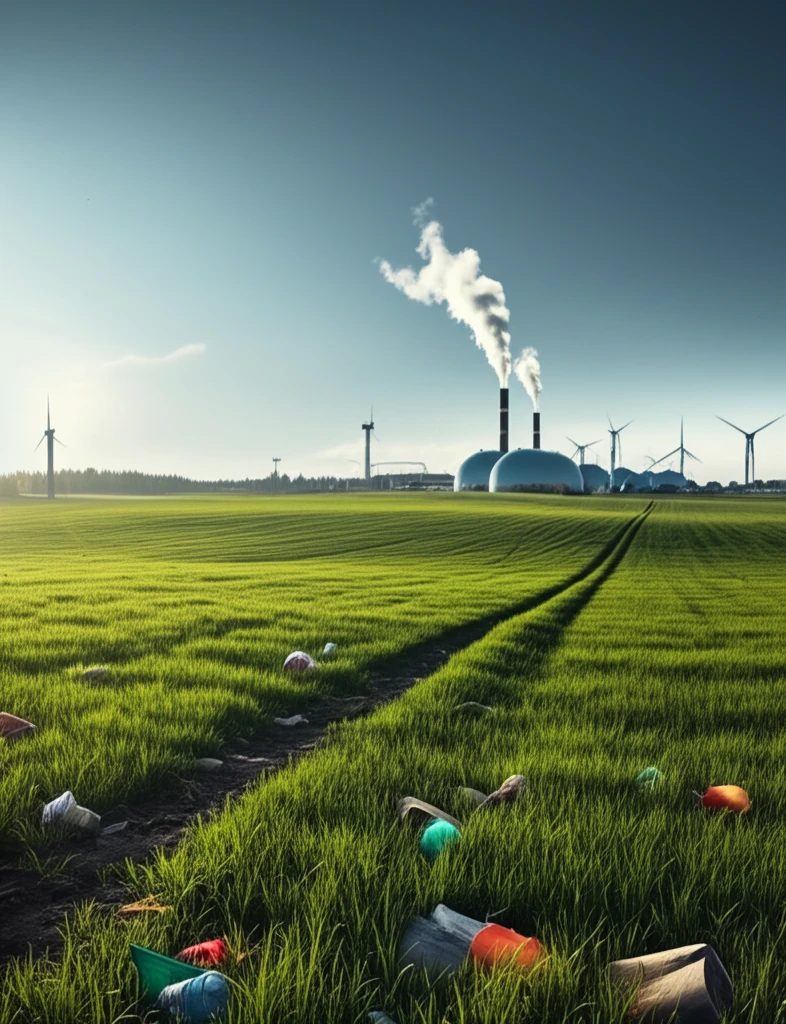
Is Anaerobic Digestion the Future of Waste Management? Unveiling the Science and Tech Shaping Sustainable Solutions
"Explore the state-of-the-art in solid anaerobic digestion (AD), a promising technology for waste valorization. Discover the scientific and technological hurdles, plus real-world applications paving the way for a greener future."
In an era defined by mounting environmental concerns and a pressing need for sustainable practices, innovative waste management solutions are taking center stage. Among these, anaerobic digestion (AD) stands out as a particularly promising technology, offering a pathway to not only mitigate waste but also generate valuable resources.
AD is a natural biological process where microorganisms break down organic matter in the absence of oxygen. This process yields biogas, a renewable energy source composed primarily of methane and carbon dioxide, and digestate, a nutrient-rich material that can be used as fertilizer. While AD has been employed for decades, recent advancements have significantly enhanced its efficiency and broadened its applicability, especially in the realm of solid waste management.
This article delves into the current state-of-the-art of solid anaerobic digestion (solid AD), exploring its scientific underpinnings, technological hurdles, and real-world applications. We will uncover how solid AD is uniquely positioned to address the challenges of managing high-solid content wastes, offering a sustainable approach to waste valorization and energy production.
Why Solid Anaerobic Digestion Matters: Turning Waste into Opportunity

Solid AD specifically addresses the challenge of organic wastes with high total solids (TS) content, such as agricultural residues, food waste, and sewage sludge. These materials are often difficult and costly to manage through traditional methods like incineration or landfilling. Solid AD offers a more sustainable alternative, reducing greenhouse gas emissions, minimizing landfill space, and producing renewable energy.
- Reduced Landfill Burden: Solid AD significantly decreases the volume of waste sent to landfills, alleviating pressure on already strained landfill capacity.
- Renewable Energy Production: Biogas generated during AD can be used to produce electricity, heat, or transportation fuels, reducing reliance on fossil fuels.
- Nutrient Recovery: Digestate, the byproduct of AD, is a valuable fertilizer rich in essential plant nutrients, promoting sustainable agriculture and reducing the need for synthetic fertilizers.
- Greenhouse Gas Mitigation: AD captures methane, a potent greenhouse gas, preventing its release into the atmosphere and reducing the overall carbon footprint of waste management.
The Future of Solid AD: A Call to Action
Solid anaerobic digestion holds immense potential as a sustainable waste management solution, offering a pathway to convert organic waste into valuable resources and mitigate environmental impact. By addressing the scientific and technological hurdles, fostering innovation, and promoting collaboration, we can unlock the full potential of solid AD and pave the way for a greener and more sustainable future.
